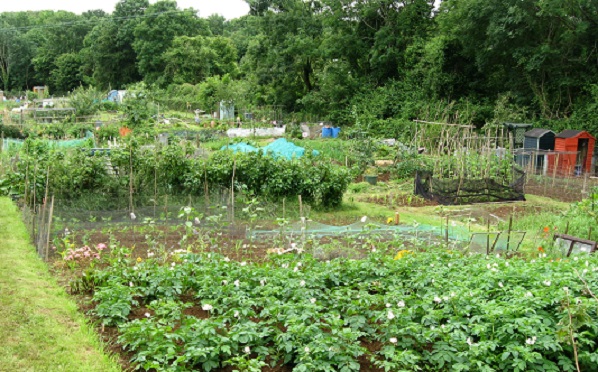
We’re celebrating National Allotment Week with a bumper crop of guest blogs from local allotment holders, gardening experts and health specialists.
First up, Rob Campling from Chichester Organic Gardening Society kicks off our series with his top tips for cultivating your allotment bed.
Allotments, organic crops and the easy life – a contradiction in terms?
It’s a truism that success in growing vegetables and ornamentals depends on the quality of the soil. A well maintained soil will normally have all the nutrients and friendly insects that plants need. However, there will also be a few unfriendly pests, and nutrients are not self sustaining – what the plant takes out isn’t always replaced by natural processes.
Most of us don’t have enough land for that self-regulating option. Crop rotation always helps, but a boost from the right sort of compost is a must. There is rarely anything better than home-made compost, but you need to be fairly experienced to get it just right and in the right quantities. Good quality commercial organic compost is the next best thing – perhaps for many of us it is a more reliable option than our own! In conjunction with a deep bed system I doubt that there is any better way to get good quality organic crops.
Deep beds that are rarely walked on (think about four foot wide and ten foot long so that everything can be reached from the adjacent paths) and regularly have an organic mulch or compost poured on them are highly productive. Late autumn or early winter is a good time for this. It doesn’t need to be dug in, as a thick layer will soon be incorporated into the underlying soil by natural processes – mostly worms. A useful side effect is that this sort of mulching will keep weeds down, as annual weeds will be buried. It won’t deal with bindweed though – nothing is perfect and that has to be forked out! Come the spring seeds and seedlings will now have the best chance of growing. Strong growing plants tend to shrug off pests, and are less susceptible to disease, so the benefits last all season. Clear benefits – and no exhausting double or single digging.
My own experience is that this method of cultivation works fairly well – never as good as in my imagination of course, but good enough to ensure a pretty good supply of vegetables and flowers throughout the year. Certainly a benefit of my own deep bed system is that cultivation is rarely affected by the weather. On a 10 rod allotment I have a dozen separate beds, mostly 22ft by 4ft. Since I rarely need to walk on most of the beds, cultivating them from the grass walkways using a fork, I don’t have to worry about wet weather or even medium frosts. In addition the weeds that do set lift out easily (well, mostly). On top of that the beds are easy to protect from pigeons with a 2ft high chicken wire enclosure. A final benefit is that cultivation of a single bed at most takes a couple of hours (depending on the neglect level) and that is a much less daunting prospect than contemplating the distant horizon of a conventional 10 rod allotment in late autumn and early spring. So maybe, just for once, we can have our (carrot) cake and eat it!



